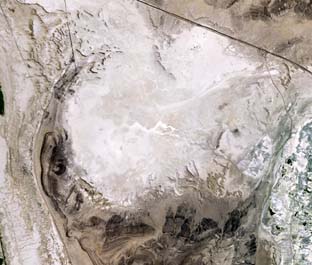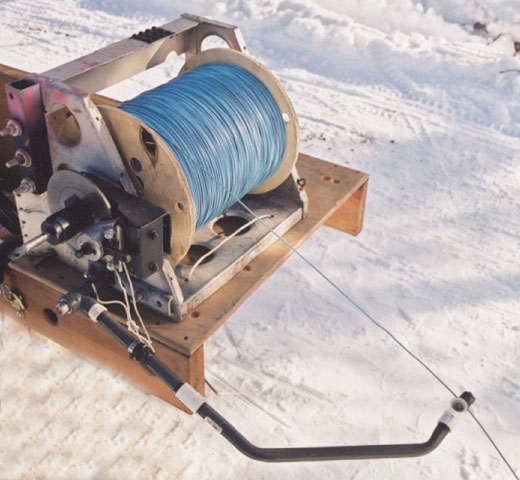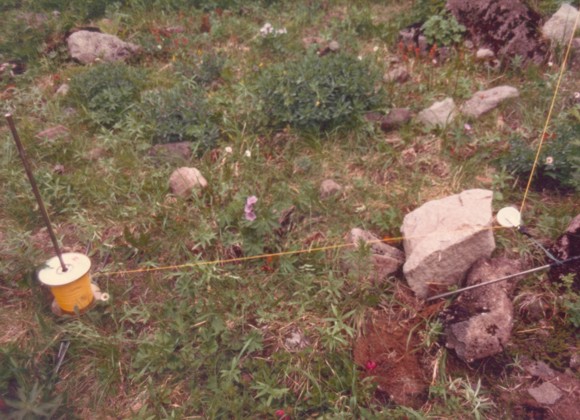 Left A playa covers a square mile of a 3D E-SCAN survey area in Nevada. By choosing an appropriate time of year for the survey, the difficulties presented by wet, muddy surface
conditions can be minimized, ensuring easier movement of project ATVs and equipment.
Left A playa covers a square mile of a 3D E-SCAN survey area in Nevada. By choosing an appropriate time of year for the survey, the difficulties presented by wet, muddy surface
conditions can be minimized, ensuring easier movement of project ATVs and equipment.
Where a playa remains wet or muddy year-round, other measures may be needed, including treating the area like a lake and installing
the primary wiring system around the perimeter, with interior electrode stations wired by whatever means works in the local conditions.
As with any E-SCAN survey, the difficult electrode station sites need to be accessed just once at the start... after that the entire survey
is shot to full True 3D standards without anyone having to venture back into that area.
Following survey completion, the wire and electrodes are recovered in only the second foray into the muddy conditions.
This is a major operating advantage for E-SCAN, in these or any difficult conditions. It ensures that surface conditions don't dictate your
exploration strategy... you get continuous 3D imagery where you need it, not just where you can get it.
Valley-bottom hot springs can create conditions worse than a playa, staying wet all year round, and including non-obvious traps of spongy or unstable
soils that make mechanized travel hazardous.
Playa conditions usually present electrical problems. Strong inherent conductivity (wet, salty conditions) distorts introduced current flow,
channelling much of it laterally instead of down. This can seriously compromise any method that does not have the ability to accurately map
the conductive layer geometry and incorporate it as part of the geo-electric earth model. 3D E-SCAN does this, so current flow distortions
are mapped and understood, allowing the important conditions deeper below, in the exploration target areas, to be accurately mapped and imaged.
All of this presumes that there is enough signal left at these depths, after lateral current flow distortion. 3D E-SCAN's comprehensive
suite of advantages again prevails: the pole-pole array's very large signal advantage (compared to conventional array surveys) delivers
useable signal levels even in generally conductive deeper conditions.
In summary, a playa tests many aspects of operating efficiency, data/signal performance, and interpretation capabilities, of which
conventional surveys tend to fail on all aspects. 3D E-SCAN considers a playa situation as just another operating setting, fully
manageable in the past, fully manageable in the future. The property-wide survey maintains perfect continuity in the true 3D field
data set (uniform distribution, high density, high signal, and multi-directional data set characteristics) on approach, through,
and past the other side of the playa conditions, as if the playa wasn't there. Time, cost, risk?

